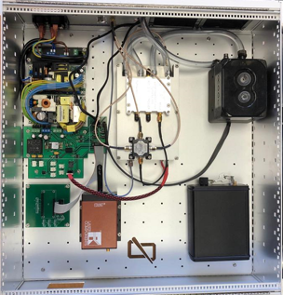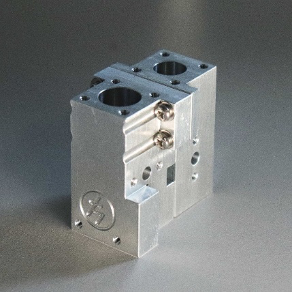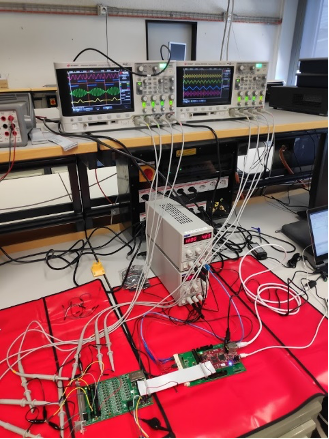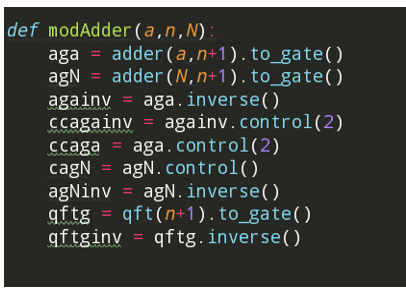Projects 2020
Quantum Sensing

Development of Hard- and Software for Automated Nitrogen-Vacancy Center Characterization in Large-area Diamond Membranes
by Chaoxin Ding, Runze Zhang, Miranda Davis, Liberto Beltran
Host laboratory: Degen Group
Abstract: A nitrogen-vacancy (NV) center is a point defect in diamond. Thanks to its nanoscale size and spin-dependent luminescence which is sensitive to a magnetic field, it can be used to develop a quantum sensor for magnetic fields with high spatial resolution and sensitivity. In order to achieve better sensing performance, it is important to use NV centers of high quality, which normally are selected out of thousands of NV pillars in large area diamond membranes. Therefore, a need for reliable and automated characterization of NV centers has emerged. In this project, we worked towards building and extending the function of a Quantum Scanning Microscope (QSM) from QZabre based on the existing prototype to make it suitable for this automated characterization. For the hardware side, the basic functionality of an atomic force microscope (AFM) stage was programmed. Special PCBs were designed, fabricated and assembled to integrate the quantum control console, which enabled a personal computer to control the signals needed for NV characterization experiments. In addition, two different microwave antennas were designed to be suitable for NV center characterization in large area diamond membranes. For the software side, a fully automated characterization algorithm for NV pillar arrays on a diamond substrate was developed. Crucial parts, such as an image detection algorithm for NV pillars in a confocal image, an algorithm for the search of a setting of low sensitivity to a magnetic field of the NV center, and a practical storage solution for classification results, have been developed. As an outlook, the performance of the microwave antenna can still be improved. For example, alternative approaches to minimizing the impact of the aluminum stage and to recovering the strong magnetic field generated by the original structure can be tried. In addition, to make the design more universal, more common materials for the printed circuit board can be investigated. To finally obtain a fully automated classification workflow, a fully functional coarse stage for moving the diamond sample has still to be finished. Also, an interface to control a magnet, which can apply a static magnetic field in all four diamond lattice directions, still has to be fully implemented.
Quantum Computing

Fast, Efficient Reset of Superconducting Qubits
by Francesco Adinolfi, Moritz Fontboté Schmidt, Alperen Tügen, Yongxin Song
Host laboratory: Wallraff Group
Abstract: The aim of this project was to do fast, efficient reset of superconducting qubits in a 3D cavity. As a first approach we chose to perform a dissipative reset through enhanced Purcell decay. With promising results obtained from QuTiP simulations on the reset scheme, we designed a coaxial quarter-wave resonator. This versatile cavity can host a dissipative mode for reset while having a high-Q mode for dispersive readout. Through the design process, evanescent coupling was utilized to improve the effective Q-factor of the cavity. To further improve the readout speed without introducing an additional decay channel for qubit, a Purcell cavity was designed and coupled to the readout cavity. After the fabrication of cavities, they were measured at both room- and liquid-helium temperatures. The characterization measurements showed that the fundamental frequencies of the cavities and their Q-factors are agreeing with our models within the expected range of experimental error. During the last phase of our project, we examined the feasibility of accelerating a branched reset logic using a field programmable gate array (FPGA).
Quantum Computing

32-Channel Arbitrary Waveform Generation for Trapped-Ion Electrode Control
by Paul Venetz, Michael Marti, Benjamin van Ommen, Marco Stucki
Host laboratory: Home Group
Abstract: Quantum information processing requires a large number of controllable quantum bits (qubits) to allow meaningful real-world applications. For trapped ion quantum computers, one of the requirements for independently controlling an ever growing number of qubits (ions) is the capability to scale the number of trapping electrode voltages easily. The focus of this project was the testing and integration of the Fastino, a 32-channel Eurocard-sized device which is part of the Sinara Open-Source Hardware Project, into the existing control system for ion trap experiments of the Trapped Ion Quantum Information (TIQI) group at ETH Zurich. In addition to the obvious advantage of the number of output channels, other reasons to implement this device into the setup are compactness, ease of setup and maintenance, and voltage stability in comparison to the custom made AWG board currently in use, while retaining similar noise level. The project encompassed design and manufacturing of a new Printed Circuit Board (PCB) to allow interfacing between current experimental hardware and the new Fastino, and writing Hardware Description Language (HDL) to handle the data-flow from a hostPC to the DACs. The final version allowed for sending waveforms from a hostPC via USB or Ethernet to the control FPGA, where it is saved in memory and continuously output to the Fastino's DACs. This paves the way for controlling hundreds of electrodes in the ion traps of the TIQI group.
Quantum Algorithms

Benchmarking quantum programming languages through Shor's algorithm
by Alessandro Bruno, Davide Materia, Xinyang She
Host laboratory: Renner Group
Abstract: One of the algorithms which achieves quantum advantage is Shor's algorithm for factoring integers. In this project, we implemented the algorithm in five different quantum computing languages (Qiskit, Qsharp, CirQ, ProjectQ, SilQ) and compared the performance. We also looked into complementing the algorithm in order to make it secure by inserting blind computation and robust to noise by adding quantum error correction techniques.
